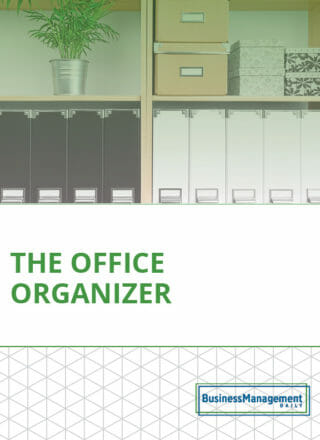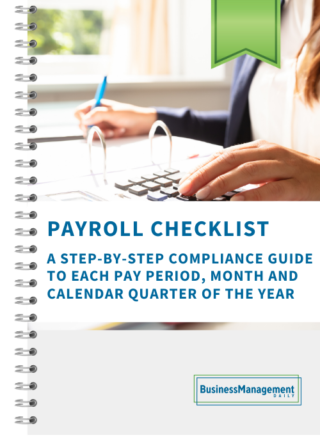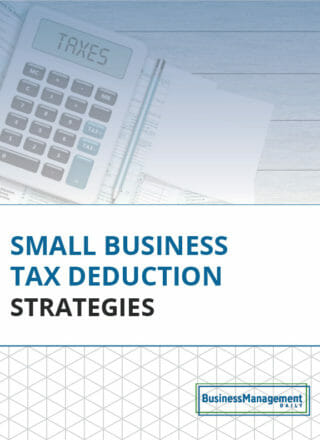Employee records: End of year review & preparing for next year
Employee recordkeeping: What to keep, what to toss, and why it matters
You might be familiar with employee recordkeeping if you work in human resources. However, even experienced HR employees sometimes need clarification.
For example, they might need to know how long to keep personnel records. This is necessary after an employee leaves the company.
If you aren’t part of HR or are new to the department, you may need to know which employment records you must keep on file. After all, the US Department of Labor has some stringent requirements for employee files, including some federal laws.
The Americans with Disabilities Act (ADA), Fair Labor Standards Act (FLSA), and Family Medical Leave Act (FMLA) have also had significant impacts on employee recordkeeping and personnel files — further complicating the issue.
Then, there are performance reviews and each employee’s history of disciplinary action, essential documents to help you avoid litigation following a termination.
Whether you use cloud-based software or old-school metal filing cabinets, having an employee recordkeeping system at your company is necessary.
Also, with the end of the year just around the corner, companies need to know which documents they need to keep and which they can discard without incurring any legal penalties.
That’s why we’ve compiled this guide covering everything you need to know about your employee records as we enter the new year.
What is employee recordkeeping and why does it matter?
Employers keep many records and documents about their employees for legal requirements because it’s a good business practice.
Personnel files serve as a way to document an employee’s relationship with a company and include the following:
- Basic employee information. These documents contain employee contact information, social security number, emergency contacts, address, and birthday. They are good to keep in case you need to reach an employee who needs to respond urgently.
- Hiring documents. Some companies hold on to hiring documents such as resumes, job applications, and job descriptions. Retaining these documents will prove you followed all employment laws when hiring new staff. Additionally, referencing an employee’s job description can be helpful for performance reviews, refilling the position, and more.
- Job performance. This category includes performance reviews and evaluations and can also include an employee’s history of disciplinary action. These documents are crucial to keep when terminating employees, as they prove their dwindling/unsatisfactory performance. This category can also include awards, promotion records, and education/training records.
- Compensation. These documents include payroll records, time cards, pay rate information, and anything related to payment.
- Post-employment records. You should keep all the documents involved with terminating employees should a dispute arise after the fact. These documents include exit interview forms, final performance reviews, termination letters, and benefits information.
- Employment agreements. If there are any union contracts, non-competition agreements, or non-disclosure agreements involved in the hiring process, you should hold on to them.
Retaining these documents will protect you from all sorts of litigation, including accusations of wrongful termination and age discrimination. These documents can also provide crucial information on performance pay adjustments and regular cost of living adjustments.
That’s why employee recordkeeping is such an effective business practice. You shouldn’t just do it to comply with employment laws; it has numerous other benefits.
Confidential employee files
Besides personnel files, there are confidential documents that you need to keep in a separate file.
These are the documents that you’re required to keep under federal law, enforced by the IRS (Internal Revenue Service), OSHA, the US Department of Labor, and the Equal Employment Opportunity Commission (EEOC).
These files include:
- Worker’s compensation claims. Worker’s compensation is an insurance program that provides pay and medical benefits to employees who were injured on the job. You must hold on to these forms legally, so don’t throw them out.
- Medical records. OSHA requires companies to hold on to employees’ medical information for the duration of their employment. Examples of medical records include first-aid records, prescriptions, medical opinions and diagnoses, medical exams, and lab tests.
- I-9 forms. The IRS requires you to fill out and retain an I-9 form for all your employees. These forms verify that your employees can legally work in the United States.
- Background checks. This varies from state to state, but if your state permits background checks, you must keep them on file.
- Employee investigation forms. You must keep any forms relating to an employee investigation, such as disciplinary action or a negative performance review.
While personnel files are primarily for the company’s use, confidential files such as these are required by law and should be kept in a secure location.
How long do you have to keep employee records?
The biggest confusion around employee records is how long you should retain them before getting rid of them. After all, if you hold on to every employee record, you’ll run out of filing space very quickly. That’s why updating your employee records is essential to stay organized.
Based on federal law, here’s a breakdown of how long you should keep each document.
How long should you keep I-9s and employment records?
You’ll need to have each new employee fill out an I-9 form, and you need to keep them on file for three years after their hire date or one year after their termination — whichever date occurs later.
For general personnel files, the EEOC states that you should hold on to them for the entire duration of their employment or one year after their termination. These files include job applications, contact information, social security numbers, and hiring documents.
So, if you notice I-9 forms hanging around for terminated employees years ago, you can get rid of them. The same applies to any I-9 forms for employees who have worked for you for over three years.
You’ll also want to eliminate old personnel files for employees who left the company over a year ago.
How long should you keep tax, payroll, and benefits records?
The US Department of Labor requires you to keep all payroll, sales, and purchase records for at least three years. You should keep time cards, wage rate tables, and job evaluations for two years before discarding them.
Lastly, you’ll need to retain employee tax information for four years following the 4th quarter of that filing year. These tax records include employee identification numbers, reported tips, W-2, and tax withholding forms (W-4, W-4P, W-4S, and W-4V).
As far as information related to employee benefits, you’ll need to hold on to those records for six years after the employee leaves the company.
Final thoughts: Employee records
Employee recordkeeping is not only required by law but also a reliable business practice that yields many benefits. Keeping employee records on file will protect you from litigation and prove that you followed all employment laws at your organization.
By now, you should better understand how long you need to keep each document type before discarding it.
Additional resources:
Employee Files: What to include, what to leave out, and what’s confidential ![]()
Workplace etiquette: The ultimate guide to professionalism ![]()
Employee personnel files — what should and shouldn’t be included ![]()



